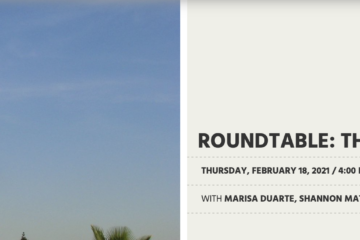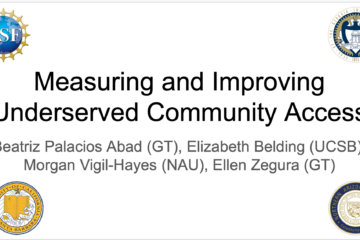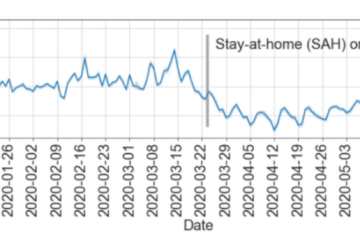How Our PuebloConnect Team is Addressing COVID-19
In March of 2020, like many people around the world, our team began making major life adjustments in response to COVID-19. Our universities deterred travel, and many tribes enforced closures, turning away all people who do not live or work on the reservation. By late March, our friends and family in reservation communities began using social media to post sad news about relatives who were gravely ill or who had passed on. By April and May, each member of our team began relying on their social and professional networks to address various related needs in Indian Country.
Supporting medical professionals
In late March of 2020, Dr. Lance Whitehair, a physician at Navajo Nation Medical Center in Shiprock, reached out to team member Dr. Marisa Duarte to help raise awareness of an impending series of outbreaks. Duarte contacted several professionals for assistance, including Native public health consultants, tribal government liaisons, and Native information scientists. Dr. Miranda Belarde-Lewis (Zuni/Tlingit), Dr. Sandy Littletree (Navajo/Eastern Band Shoshone), Dr. Doreen Bird (Santa Domingo Pueblo) and Dr. Morgan Vigil-Hayes had an initial conversation with Dr. Whitehair about what they could do to raise regional public awareness of the outbreaks. Over several months, Dr. Whitehair sent bimonthly updates about changing supply needs at the Navajo Nation Medical Center and the known state of the epidemic through the Four Corners region as well as related parts of Indian Country and the affected states. Dr. Vigil-Hayes developed a program to scrape relevant up-to-date epidemiological statistics from the Web so that Dr. Whitehair could more easily construct his weekly analysis of the spread of COVID-19. The research team disseminated the information through their social networks, and also assisted Dr. Whitehair in crafting a letter to New Mexico Governor Michelle Lujan, indicating need for supplies, training, and improved rural Internet infrastructure toward telemedicine. Team member Jennifer Case Nevarez mobilized formal and informal community networks to collect and distribute and donate PPE to health professionals and medical facilities in the region.
Supporting communities

Nevarez also coordinated donations of over 275,000 PPE and supplies to various organizations and groups in need, including to every pueblo and tribe within New Mexico. During the spring and summer, families, students, teachers, and schools serving large numbers of rural students began to realize how significantly the lack of Internet infrastructure was impeding distance learning. To help address connectivity, Nevarez reached out to the Information Technology Disaster Resource Center, who sent professionals to extend existing wireless networks through installation of carefully placed WiFi hotspots. To help address access, Nevarez partnered with Kimball Sekaquaptewa of the Santa Fe Indian School and the New Mexico Department of
Education to identify families in need of laptops and to deploy Google Chromebooks to K-12 students. Nevarez also helped collect information about community hotspot locations, which is now posted at New Mexico Hotspots. (https://www.communitylearningnetwork.org/hotspots.html) When the Southwestern Association for Indian Arts announced that the annual Indian Market in Santa Fe would be virtual, Nevarez coordinated volunteers to help Native artists create online profiles for the virtual market platform.
Answering the call for critical information dissemination and sharing
In a call to action, Xie et al (2020) recommend that information scientists find ways to share information critical to addressing the COVID-19 global health crises beyond their usual communities of practice, to policy-makers, and to others who can strategically address the grand challenges associated with public health, information behavior, digital divide, and disaster informatics. Duarte collaborated with Dr. Linnett Taylor and members of the Global Justice Data Team at the Tilburg Institute for Law, Technology, and Society (TILT), including Dr. Gargi Sharma, Dr. Aaron Martin, and Dr. Shazade Jameson to submit a dispatch on the impact of COVID-19 in Indigenous North America. The Global Data Justice Team published a book on Data Justice and COVID-19: Global Perspectives, including a free e-book format for dissemination to policy-makers and journalists. Duarte also spoke on how the PuebloConnect team is addressing COVID-19 to Indigenous public health professionals and information professionals through the Seven Directions Center for Indigenous Public Health at the University of Washington. The recording of the talk is available at https://www.indigenousphi.org/videos/setting-up-hotspots-and-mapping-the-movement-of-the-virus-through-northern-new-mexico.
Pursuing new methods for public health surveillance in vulnerable communities
Dr. Elizabeth Belding, Dr. Ellen Zegura, and Dr. Vigil-Hayes have an ongoing collaboration with Skyhook, a company that uses real-time location data from cellular networks to inform geospatial analyses. As part of our collaboration with Dr. Whitehair, Dr. Littletree and others discussed specific locations through the most affected areas in northern New Mexico where people likely congregate. Esther Showalter, a doctoral student at UCSB, created polygons for the region, which team members Showalter, Belding, Vigil-Hayes and Zegura then layered with Skyhook cellular mobility data. The results indicate a number of relationships between rurality, human movement, and the spread of the virus through northern New Mexico. Importantly, the process of curating the data sets needed to develop this approach to public health surveillance in Indian Country also indicates the range of skills, technologies, partnerships, and facilities needed to carry out retrospective and possibly predictive public health surveillance through cellular mobility tracking across rural Indian Country. Their work was recently accepted for publication in the ACM HotMobile’21 conference, and can be found here (https://ebelding.cs.ucsb.edu/sites/default/files/publications/tribal_mobility_and_covid_19_an_urban_rural_analysis_in_new_mexico.pdf).
NSF RAPID award to Belding to Map Internet Access in California
Dr. Elizabeth Belding was the recipient of an NSF RAPID award titled “Neighborhood-level U.S. Internet Accessibility Assessment through Dataset Aggregation and Statistical and Predictive Modeling.” The proposal was in response to an NSF Dear Colleague Letter on the Coronavirus Disease 2019. The state of California, like the rest of the nation, suffers from digital inequities in multiple dimensions: rural and tribal regions are far less likely than urban cities to have high speed Internet access, and Internet availability and quality within communities can often be predicted based on demographic and socioeconomic factors. The project addresses the digital inequities that exist in California through its three goals: (i) to aggregate data from public and private sources to produce the most fine-grained analysis and detailed maps, to date, within states, at the community and, ideally, neighborhood level, of where fixed and mobile Internet access exists, where it does not, and where it is of too poor quality to be usable; (ii) to build statistical models that use demographic and other social variables to understand variation in Internet availability and quality; and (iii) to use what is learned to build predictive models of Internet service in areas for which there exist insufficient measurement data from available sources. It is intended that methodologies developed through the project are easily transferable to other states, and that a similar analysis will be replicated for the state of New Mexico.
Ethical reflection
Our team has had to rapidly pivot and shift directions numerous times to sustain our research trajectory amid the COVID-19 pandemic. This has caused us to reflect on many aspects of the project, from the limitations of tribal network sovereignty in a health crisis, to the realities of gendered labor by women academics sans childcare, to issues associated with technology dependency and information technology for development in a disaster scenario. As we continue publishing and speaking out about lessons learned from the project, we hope that our fellow colleagues and associates working in digital divide arenas as well as in HCI also take time to observe how the pandemic is affecting the innovation of integral Internet services to vulnerable and rural populations, and moreover, that they take time to reflect on how we as HCI and information professionals can be more responsive, more understanding, and more effectively meeting the needs of these communities.


